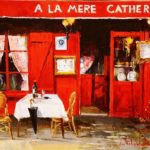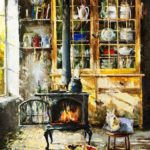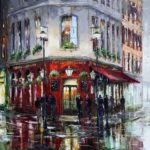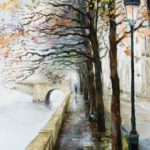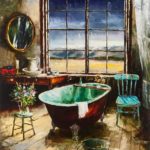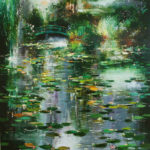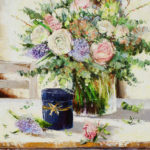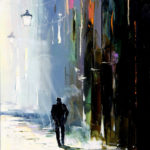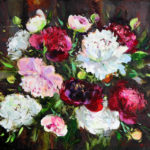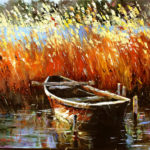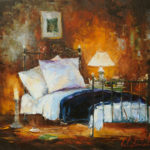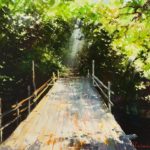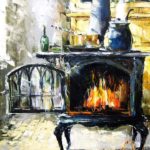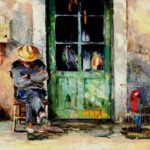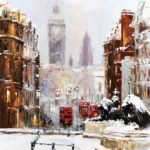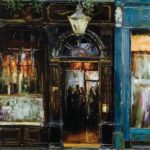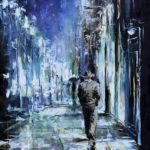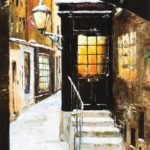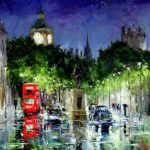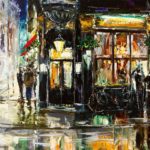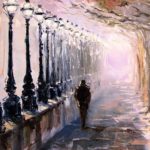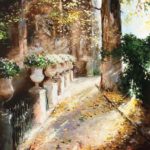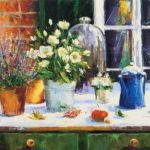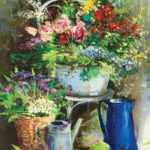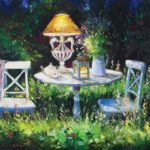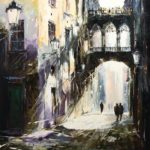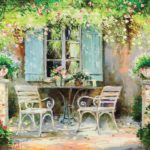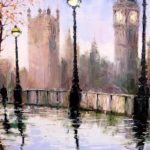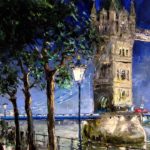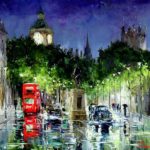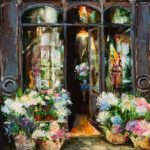
ARTIST BIO
Born in Omsk in the former Soviet Union in 1975, Gleb Goloubetski displayed noticeable artistic talent and a keen interest in the arts from an early age. His initial tutorage and inspiration came from his late father, who achieved success as a painter in his own right and who actively encouraged Gleb to paint.
Gleb’s formal training came from his studies at the highly acclaimed academy in St Petersburg where his work attracted much attention. He maintains a close relationship with both the academy and his former professor.
Gleb’s inspiration comes primarily from the aged architecture and geography of Europe; he has special associations with the United Kingdom, the Mediterranean, the USA and the Far East. He travels extensively looking for images to paint. When he finds a view that inspires him, Gleb will sit and absorb it for some time, paying particular attention to how the natural light conditions of the day influence his perspective and moreover his emotional response.
Returning to his main studio in St Petersburg, Gleb will sit and consider his reference material. Reminding himself of scale, he then begins to paint. It is Gleb’s emotional response to the subject that he conveys to canvas, in oil, with his palette knife.
Curator Graham Powell comments, “Goloubetski is an exceptionally talented artist, his ability to lay emotion onto canvas is a marvel to behold. It remains a thrill to present his work at my London gallery.”
Gleb’s work has an ever increasing international following and is presented in London exclusively by Graham Fine Art.
INTERVIEW
Artist: Gleb Goloubetski
Do you remember your earliest memory of wanting to be an artist?
My father was an artist. My grandfather was an architect. In earliest childhood all my family told me that I would become a painter, and I have not had any other thoughts about my future profession.
Who was your mentor, and what is the most important thing you’ve learned from him?
It was an artist and friend of my family; and he taught me that the main thing is to have freedom on the canvas and a technique of for working with a pallet knife.
Your work is contemplative, not just about your own personal history, but about your country and the history of art. What is you creative process like?
In the beginning, I was inspired by painters from the early 20th century, especially Impressionists and painters of the Russian School. Later, when my style was formed, I began to take inspiration from my travels. I tried to sense the atmosphere of a place and bring it to canvas.
How has your style changed over the years?
During these painting years I have come to pay more attention, not to details and forms, but to what I feel in a place. What is the spirit of this place?
Was you family always supportive of your dream to be an artist?
I was lucky. My family has always supported me in my path.
What do you dislike about the art world? What is the hardest thing about being an artist?
I dislike it when curators manipulate the art-process and try to dictate the artist’s path.
What is your daily routine when working?
The most important thing is to summon enough power and inspiration for the process—and to find a correct distribution of rest and work.
What is the goal of your art?
It is to create beauty and evoke emotions of joy.
I want to become a successor to an artist dynasty and an heir of the Russian school.
Click the images to see full size.
